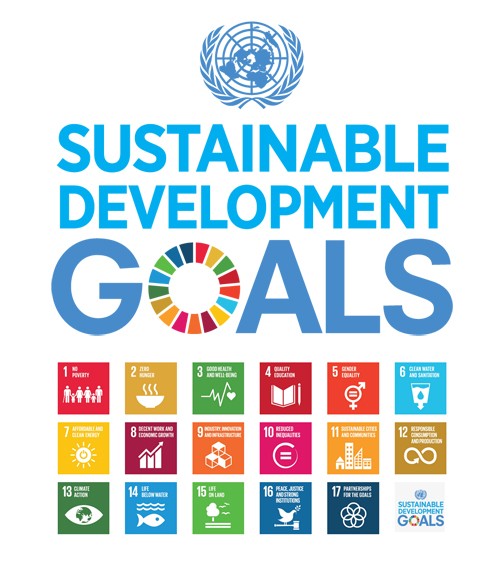
The new Sustainable Development Goals (SDGs) seems to be one of the greatest challenges for the Developing Agencies, Non-Governmental Organizations and the Developed Nation in terms of long terms goals and opportunities of management. Though designed with better integration techniques and modules, the SDGs simply highlights the action and procedure of achievement with a minimum integration level. The major hurdle to the achievement of the SDGs is the core values of the people and society. The basic difference is the acceptance and adaptation of the SDGs at grassroots level. On one hand the agencies are trying to give the values of acceptance to the developing economies where the social values are in the process of evolving and experimenting. The adaptation process alienate in every way possible where the major objectives focus more towards report submission attitude.
From the developed nation to the developing to the least developed, the mentality and core values differentiates variably. Even the meanings can differentiate in terms of cultural understanding and practice which can create gaps in terms achievement.
The leadership fails to understand the relativity of the problem which leads to the lack of understanding. Reality is in variable situation in the lower developing economies things do not work out as per laws and standards. Things need to adjust and adapt as per region and communities where the superior core values of the leadership rules in.
For example regarding poverty and women empowerment issues there is a huge gap. Poverty is something that is not just related to the income level of the people especially in the east poverty is more of a socio-cultural aspect that is integrated with specific tasks, activities and even livelihood. Likewise, women empowerment is subjected to hardcore values of the west where women in the east face a challenge in understanding their rights and independence. The contradiction in between the values of the east and west further broadens the gaps resulting in creating vulnerabilities of limited effectiveness and efficiency. In the past practice of Millennium Development Goals the developing agencies adopted the strategy of focusing government as concern stakeholder but this resulted in limited approach of just completion of project than effective implementation of the project in real terms. Though many of the projects turn out to be successful in papers and reports but on real grounds the projects were turned out as soon as the funding were turned off.
The major problem in the developing agencies are the leadership at times of need impose their ideologies and practice that contrast the practice.
In most of the countries the developing agencies are led by developed national who fail to addresses the issues. The cultural, language and the social values plays a crucial role in the motivation and operation of the practice.
With the current integration of “Multistakeholder concept the SDG’s seems pretty convincing but in lack addressing the mechanism of developing core values strategies the SDG’s needs a dynamic strategy in terms of its acceptance.
Meaning of SDGs
| Sustainable Development Goals are the new set of goals that have been preceded by the Millennium Development Goals understanding and adapting the vulnerabilities of its action process.
It can be referred as the Global Goals set for the uniform development prosperity, partnership, and justice of overall sectors and global community. It consist of 17 goals where the framework will be formally launched over September 25-27th, 2015. UN Member States, civil society, and private sector contributors will use the Sustainable Development Goals to shape and guide development global efforts over the next 15 years.
The goals are listed below: Goal 1. Ending poverty in all its forms everywhere Goal 2. End hunger, achieve food security and improved nutrition and promote sustainable agriculture Goal 3. Ensure healthy lives and promote well-being for all at all ages Goal 4. Ensure inclusive and equitable quality education and; promote lifelong learning opportunities for all Goal 5. Achieve gender equality and; empower all women and; girls Goal 6. Ensure availability and; sustainable management of water and; sanitation for all Goal 7. Ensure access to affordable, reliable, sustainable and; modern energy for all Goal 8. Promote sustained inclusive and; sustainable economic growth full and; productive employment and; decent work for all Goal 9. Build resilient infrastructure, promote inclusive and; sustainable industrialization and; foster innovation Goal 10. Reduce inequality within and; among countries Goal 11. Make cities and; human settlements inclusive, safe, resilient and; sustainable Goal 12. Ensure sustainable consumption and; production patterns Goal 13. Take urgent action to combat climate change and; its impacts Goal 14. Conserve and; sustainably use the oceans, seas and; marine resources for sustainable development Goal 15. Protect, restore and; promote sustainable use of terrestrial ecosystems, sustainably manage forests, combat desertification, and; halt and; reverse land degradation and; halt biodiversity loss Goal 16. Promote peaceful and; inclusive societies for sustainable development, provide access to justice for all and; build effective, accountable and; inclusive institutions at all levels Goal 17. Strengthen the means of implementation and; revitalize the global partnership for sustainable development
|
Challenges of SDGs in terms of implementation and achievement
1. Lack of core values
2. Orthodox working mentality of developing agencies
3. Lack of adaptation strategy
4. Report mentality
5. Difference of economic values
6. Developing agency politics